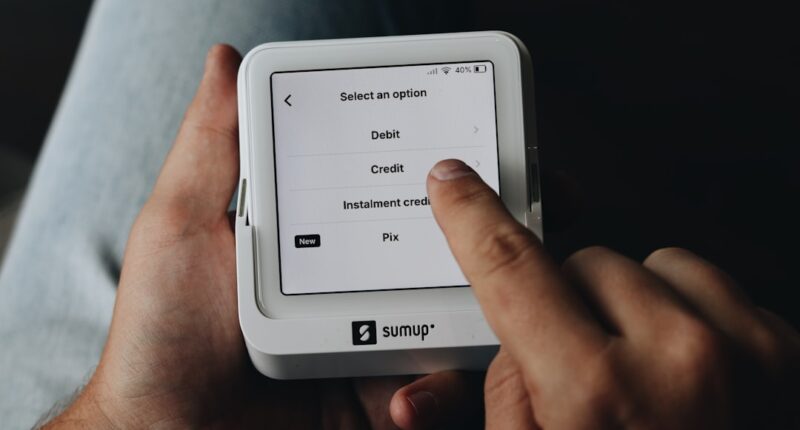Non-fungible tokens (NFTs) have significantly impacted the art world, transforming the processes of buying, selling, and appreciating digital art. NFTs are unique digital assets stored on a blockchain, ensuring their individuality and non-interchangeability. This characteristic distinguishes NFT art from conventional digital art by enabling verifiable ownership and scarcity in the digital domain.
NFT art encompasses various forms, including digital paintings, animations, videos, music, and virtual real estate. The value of NFT art is influenced by factors such as the artist’s reputation, the piece’s rarity, and collector demand. From a financial standpoint, NFT art has created new avenues for artists to monetize their work and for collectors to invest in digital assets.
The decentralized nature of blockchain technology facilitates transparent and secure transactions, enabling artists to receive fair compensation for their creations. Furthermore, the ability to incorporate royalties into NFTs ensures that artists can continue to earn income from subsequent sales of their work. For collectors, NFT art provides an opportunity to diversify investment portfolios and participate in a growing market with potential for high returns.
However, it is crucial to note that the NFT market is relatively new and can be volatile, necessitating thorough research and careful consideration for those interested in entering this space.
Key Takeaways
- NFT art is a digital asset that represents ownership or proof of authenticity of a unique piece of art or collectible, and it is bought and sold using cryptocurrency.
- Setting up a digital wallet is essential for NFT transactions, as it allows you to store, manage, and transfer your NFT art securely.
- Research and select NFT art pieces carefully by considering factors such as the artist’s reputation, the uniqueness of the artwork, and its potential for appreciation in value.
- Evaluate the financial aspect of NFT art investments by considering factors such as the current market trends, the demand for the artwork, and the potential for resale value.
- Purchase NFT art through a reputable marketplace or platform that offers secure transactions and provides transparency on the ownership and provenance of the artwork.
- Manage and store NFT art in your digital wallet to ensure its security and authenticity, and consider using cold storage options for long-term storage.
- Explore opportunities for NFT art-related jobs and careers, such as becoming an NFT artist, curator, or working in NFT marketplaces and platforms.
Setting Up a Digital Wallet for NFT Transactions
Before diving into the world of NFT art, it’s crucial to set up a digital wallet to store and manage your NFTs. A digital wallet is a software program that allows you to securely store and transfer your NFTs on the blockchain. There are various types of digital wallets available, including web-based wallets, desktop wallets, mobile wallets, and hardware wallets.
Each type has its own set of advantages and considerations, so it’s important to choose one that aligns with your needs and preferences. To set up a digital wallet, you’ll need to choose a reputable wallet provider and follow their specific instructions for creating an account. This typically involves generating a unique wallet address and securing it with a password or private key.
It’s crucial to keep your private key safe and secure, as it grants access to your NFTs and should never be shared with anyone else. Once your digital wallet is set up, you can start exploring NFT marketplaces and platforms to buy, sell, and trade digital art. Keep in mind that some platforms may have specific wallet requirements or integrations, so it’s essential to do your research and ensure compatibility before making any transactions.
Researching and Selecting NFT Art Pieces

When it comes to selecting NFT art pieces, thorough research and due diligence are key to making informed decisions. With a plethora of options available in the NFT market, it’s essential to consider factors such as the artist’s reputation, the uniqueness of the artwork, and its potential for appreciation in value. Start by exploring different NFT marketplaces and platforms to get a sense of the variety of art available and the range of prices.
Look for artists whose work resonates with you and whose style aligns with your personal preferences or investment goals. Beyond aesthetics, consider the artist’s track record, previous sales history, and overall impact on the NFT art community. Established artists with a strong following and proven sales track record may offer more stability and potential for long-term value appreciation.
On the other hand, emerging artists with unique perspectives and innovative approaches to digital art may present opportunities for early investment and growth potential. It’s also important to consider the scarcity of the artwork, as limited editions or one-of-a-kind pieces may hold greater value over time. Ultimately, selecting NFT art pieces is a highly personal and subjective process that requires careful consideration of both artistic and financial factors.
Evaluating the Financial Aspect of NFT Art Investments
As with any investment, evaluating the financial aspect of NFT art requires a comprehensive understanding of market trends, risk factors, and potential returns. While NFT art has gained significant attention and investment interest in recent years, it’s essential to approach it with a critical eye and realistic expectations. Consider factors such as market demand, price volatility, and the potential for long-term appreciation when evaluating NFT art investments.
One approach to evaluating the financial aspect of NFT art investments is to analyze historical sales data and market trends for similar artworks or artists. Look for patterns in pricing, demand fluctuations, and overall market sentiment to gauge the potential for future value appreciation. Additionally, consider the broader economic and technological landscape that may impact the NFT market, such as regulatory developments, advancements in blockchain technology, and shifts in consumer behavior.
Diversification is also crucial when investing in NFT art, as spreading your investments across different artists or genres can help mitigate risk and maximize potential returns.
Purchasing NFT Art through a Marketplace or Platform
Once you’ve researched and selected NFT art pieces that align with your preferences and investment goals, it’s time to consider purchasing them through a reputable marketplace or platform. There are numerous platforms dedicated to buying, selling, and trading NFT art, each with its own unique features, user interface, and community of artists and collectors. Some popular NFT marketplaces include OpenSea, Rarible, Foundation, and SuperRare, among others.
When purchasing NFT art through a marketplace or platform, it’s important to consider factors such as transaction fees, user interface experience, security measures, and community engagement. Look for platforms that offer transparent pricing structures and clear guidelines for buying and selling NFTs. Additionally, consider the platform’s reputation within the NFT community and its track record for supporting artists and collectors.
Some platforms may also offer additional features such as auctions, curation programs, or social networking capabilities that can enhance your overall experience as an NFT art investor.
Managing and Storing NFT Art in Your Digital Wallet

After purchasing NFT art pieces, it’s crucial to manage and store them securely in your digital wallet to ensure their safety and integrity. Your digital wallet serves as a secure vault for your NFTs, allowing you to access, transfer, or showcase your digital art collection as desired. It’s important to familiarize yourself with the features and functionalities of your chosen digital wallet to effectively manage your NFTs.
When managing NFT art in your digital wallet, consider organizing your collection based on factors such as artist name, artwork type, purchase date, or value appreciation potential. This can help you keep track of your investments and make informed decisions about buying or selling additional NFTs in the future. Additionally, stay informed about any software updates or security measures recommended by your wallet provider to protect your assets from potential threats or vulnerabilities.
Exploring Opportunities for NFT Art-Related Jobs and Careers
The rise of NFT art has created new opportunities for individuals interested in pursuing careers or jobs related to this burgeoning industry. From artists and collectors to curators, platform developers, marketers, and legal experts, there is a wide range of roles within the NFT art ecosystem that cater to diverse skill sets and interests. Artists can leverage NFTs as a means of monetizing their digital creations while retaining ownership rights and earning royalties from resales.
Collectors can explore opportunities in curation, portfolio management, or advisory services within the NFT art market. For those with technical expertise in blockchain technology or digital asset management, roles in platform development, security auditing, or smart contract programming may be of interest. Additionally, marketing professionals can contribute their skills to promote artists’ work or enhance platform visibility within the competitive NFT art landscape.
Legal experts specializing in intellectual property rights or digital asset regulation can provide valuable guidance on navigating legal considerations within the evolving NFT art market. As the industry continues to evolve and expand, there will likely be an increasing demand for professionals with specialized knowledge and experience in NFT art-related roles. In conclusion, understanding NFT art and finance involves recognizing the unique qualities of non-fungible tokens as digital assets with potential financial value.
Setting up a digital wallet is essential for managing these assets securely while researching and selecting NFT art pieces requires careful consideration of artistic merit as well as investment potential. Evaluating the financial aspect of NFT art investments involves analyzing market trends and historical data while purchasing through reputable platforms ensures a smooth transaction process. Managing and storing NFT art in a digital wallet is crucial for protecting these assets while exploring opportunities for careers related to NFT art presents exciting possibilities within this rapidly growing industry.
If you’re interested in learning more about the world of NFTs and how they are impacting the job market, check out this article on NFT Jobs. This article provides insights into the growing demand for NFT-related skills and the various job opportunities available in this emerging industry. It’s a great resource for anyone looking to explore career options in the NFT space.
FAQs
What is NFT art?
NFT art refers to digital artwork that is tokenized using blockchain technology. Each piece of NFT art is unique and has a digital certificate of ownership, making it a collectible asset.
What is Finance?
Finance is a decentralized platform that allows users to buy, sell, and trade NFTs. It provides a marketplace for digital art and collectibles, as well as a platform for creators to mint and sell their own NFTs.
How do I buy NFT art with Finance?
To buy NFT art with Finance, you will need to create an account on the platform and connect a digital wallet. Once your wallet is connected, you can browse the marketplace and purchase NFT art using cryptocurrency.
What are the steps to buy NFT art with Finance?
The steps to buy NFT art with Finance include creating an account, connecting a digital wallet, browsing the marketplace, selecting the desired NFT art, and completing the purchase using cryptocurrency.
What cryptocurrencies can I use to buy NFT art on Finance?
Finance accepts various cryptocurrencies for purchasing NFT art, including Ethereum (ETH) and Binance Coin (BNB). Make sure to check the accepted payment methods on the platform before making a purchase.
Is it safe to buy NFT art with Finance?
Finance uses blockchain technology to ensure the authenticity and ownership of NFT art, making it a secure platform for buying and selling digital collectibles. However, it’s important to exercise caution and conduct thorough research before making any purchases.





